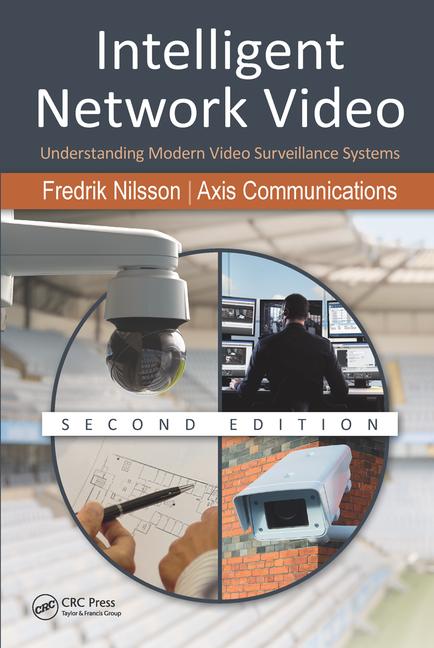As anyone who’s in the security industry is already acutely aware, there are cameras and display screens everywhere. A lot of that video technology is used to entertain, while a good bit is used for surveillance. Eventually, though, all of those cameras and screens — especially when coupled with commands from a human voice — will be serving us in ways we can barely imagine.
Before we get to predicting the future when it comes to video tech, though, let’s start with where we are now: in the midst of a TV shift from what we call “hi-definition” to “4K” — and on the verge of a smart home revolution driven by very small cameras.
Sharpness & Color, Blacks & Whites
The current screen the average consumer is looking at probably delivers an image 1080 pixels tall by 1920 pixels wide that’s presenting 256 different shades each of red, blue and green. It’s a fine setup as long as the viewer is sitting at a distance from the panel that’s three times the height (in inches here, not pixels) of the screen. At that distance, the pixels don’t pixilate; any closer and the human eye begins to detect a less-than-natural edge between objects on the screen. 4K screens double those numbers, allowing you to scoot closer to the screen with no loss in sharpness; and at 8K we’re rapidly approaching an image quality that the eye will perceive as very lifelike. As is often the case when there’s a jump in display technology, the amount of content available in the newest format isn’t yet all that ubiquitous, so even folks with the latest and greatest screens have limited options when it comes to movies and shows in 4K.
As the video designers and engineers work to increasingly clarify the image, the other aspects they consider are color and brightness. A big issue faced by these folks is the “Coke can problem.” Believe it or not, even with the potential to display a range of more than 16.7 million colors (256 reds by 256 greens by 256 blues), the image of a can on that average television can’t match the deeply nuanced red trademarked by that iconic soda. As screens approach true HDR (high dynamic range) the spectrum of color will spike into the trillions of shades, creating an image that surpasses what the human eye can see and matching the priciest cameras in use today.
But there’s one more issue TV engineers contend with — lights and darks. Because television delivers images from a light source, displaying darkness has been a challenge: black is the absence of light. There are currently TVs on the market, though, that don’t even look like they’ve been turned on when they’re displaying an all-black image. Very bright shades of white are another challenge: a flash of sunlight on a TV screen doesn’t usually cause the viewer to squint, but display technology is marching closer and closer to prompting that reflex.
From Set to Cinema to VR
Of course, there’s another way to get an image onto a screen beyond your standard TV set setup: use a projector to throw the motion picture onto a high-quality display surface. Laser technology coupled with top-of-the-line screens — some of which are acoustically transparent so that center-channel audio can live behind them with no reduction in sound or image quality — can deliver a home theater experience that beats a trip to the movies. (When you go to the Cineplex, you can’t pause the flick to get popcorn.) These setups, like the audio that accompanies them, require careful calibrations to satisfy a cinephile.
There’s a different kind of screen that’s being perfected, too — the one that a viewer wears. There was a time when virtual reality video game goggles did little more than make the viewer nauseous. The problem? The image didn’t respond to the motion of the wearer’s head. The game-changing technology for wearable VR has arrived: next-gen gear that works with movements. Now, when a wearer turns his head upward the viewer will get a lifelike look at the virtual ceiling — or the alien ship overhead. VR rigs are fantastic fun for gaming and otherworldly trips across the thin air in canyons and down rollercoaster drops, but a combination of virtual reality and “augmented reality” — adding something to an existing space instead of creating that space — will soon give us “mixed reality” entertainment. Remember the hologram-driven chess game in the first Star Wars film? That’s the concept in a nutshell. (Oh, and don’t forget: Let the Wookie win.)
Screen Gems
We’re already surrounded by all manner of display screens, from the big TV to the face of the modern watch, but we really ain’t seen nothin’ yet. TV screens have begun popping up in mirrors so you can catch the news while you’re shaving, and those displays will be interactive in a mere moment. “Smart glass” soon will be available from the windows to your shower doors, and touch-screen technology can be implemented nearly anywhere now. Movable and adaptable screens have begun popping up, too. Screens will be able to physically change to match the aspect ratio of the images they’re showing, whether that’s the narrow screen of classic Hollywood films or the broad width of a Cinemascope epic.
As projection devices become ever more advanced, literally anything that can be will be transformed into a “screen.” Here’s a fairly non-practical example: imagine a laser projector that can display a plaid image onto a couch, an image that follows the precise curves and angles of the furniture, mimicking fabric patterns perfectly. OK: Sick of plaid by next Tuesday? Just hit the button to change it to stripes.
Surveillance, Security & the Next Interfaces
Video can easily be a two-way street, of course. The sudden proliferation of devices such as video doorbells have given the consumer a broad range of security products that can be monitored with incredible ease, and those products run from DIY-installed models to professionally integrated systems. As more and more of these devices are connected to the Internet of Things and broadband gets ever speedier, it won’t be long before those video doorbells double as locks — yep, facial recognition will eventually have residential applications.
But beyond the next generation of biometric locks and access tools, there’s another trend that will soon be upon us: the marriage of gesture and voice to control every aspect of the modern smart home. With the right number of microphones coupled with the right number of cameras — and we’re talking very small devices on both counts — we’ll soon be able to point at the stereo and just ask for Miles at 50 decibels or Metallica cranked up to 11.
In fact, several presentations at the most recent CEDIA show in Dallas — the massive residential-tech exposition that offered products and training aplenty — focused on the notion of something called “NOUI.” If “graphical user interface” is known as “GUI” and the insertion of “Voice” into the acronym equals “VUI,” then NOUI means, literally, NO interface. It’s actually something of a misnomer: NOUI assumes that machine learning will reach a point that a home will learn your habits, and turn on the kitchen light and turn up the oven to 425 degrees because you’ve just come home from work with a take ‘n’ bake pizza. The interfaces have done all the advance work to predict an outcome.
Those machines have to learn by observing, though, and the obvious question is: How comfortable will the average homeowner be with the knowledge that he or she is literally on camera 24/7/365? The answer to that question lies in the addition of digital security to the specialist’s toolkit. The monitoring of systems, network checks, troubleshooting, and service contracts that include agreements on keeping out both the physical and virtual threats are sure to see profound growth as the IoT progresses. After all, it seems, the answer to the question “What’s on TV?” will soon be “All of us — all the time.”












